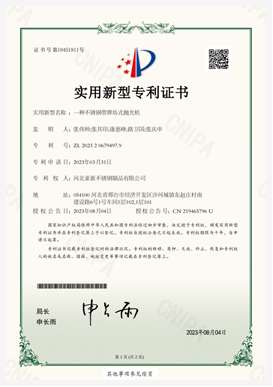corn forage harvester
The Role of Corn Forage Harvesters in Modern Agriculture
In contemporary agriculture, efficiency and productivity are paramount. Among the tools that have revolutionized farming practices, the corn forage harvester stands out as an essential piece of equipment for dairy and livestock operations. This machine plays a critical role in harvesting maize, turning it into silage that serves as a nutritious feed for various types of livestock, particularly during the winter months when forage is scarce.
Corn forage harvesters are designed to cut, chop, and condense corn plants into manageable pieces. The process begins with the machine moving through the field, utilizing sharp blades to slice the stalks of corn at the base. As the machine advances, a series of rollers feed the cut corn into an internal chamber where it is chopped into small pieces, usually between half an inch to two inches long. This size is optimal for fermentation, which is crucial for producing silage.
One of the key advantages of using a corn forage harvester is its efficiency. Traditional methods of harvesting corn for silage involved more manual work and often relied on stationary equipment. In contrast, modern forage harvesters can operate at high speeds, significantly reducing the time required to collect large volumes of corn. Some harvesters can process up to 10 acres per hour under ideal conditions, allowing farmers to maximize their time and resources during the critical harvest season.
corn forage harvester

Moreover, these machines are equipped with advanced technology that enhances their functionality. Many modern corn forage harvesters come with GPS guidance systems that ensure precise navigation through the fields. This technology not only minimizes overlap and gaps but also optimizes the overall harvesting pattern, leading to more efficient use of both time and fuel. Additionally, some models feature real-time monitoring systems that provide data on the machine's performance, allowing farmers to make informed decisions about their operations.
The benefits of using corn forage harvesters extend beyond just efficiency. By producing high-quality silage, these machines contribute to better livestock health and productivity. Silage made from properly harvested corn is rich in nutrients, which is vital for the growth and milk production of dairy cows and the weight gain of beef cattle. When livestock are fed high-quality silage, it can lead to improved feed conversion ratios, meaning that animals can grow faster and produce more milk with less feed, ultimately boosting farm profitability.
Furthermore, the versatility of corn forage harvesters makes them useful in a variety of farming systems. They can be utilized in different climates and soil types, enabling farmers to adapt to changing agricultural landscapes and practices. As sustainable farming continues to gain traction, the role of corn forage harvesters in ensuring efficient feeding strategies has become even more critical, allowing farmers to reduce waste and enhance the sustainability of their operations.
In conclusion, corn forage harvesters are indispensable tools in modern agriculture, driving efficiency, enhancing livestock nutrition, and contributing to sustainable farming practices. As advancements in technology continue to evolve, we can expect these machines to play an even more significant role in the future of agriculture, supporting farmers in their quest to meet the growing demands of food production.
Latest news
-
When to Upgrade Your Old Forage HarvesterNewsJun.05,2025
-
One Forage Harvester for All Your NeedsNewsJun.05,2025
-
Mastering the Grass Reaper MachineNewsJun.05,2025
-
How Small Farms Make Full Use of Wheat ReaperNewsJun.05,2025
-
Harvesting Wheat the Easy Way: Use a Mini Tractor ReaperNewsJun.05,2025
-
Growing Demand for the Mini Tractor Reaper in AsiaNewsJun.05,2025







